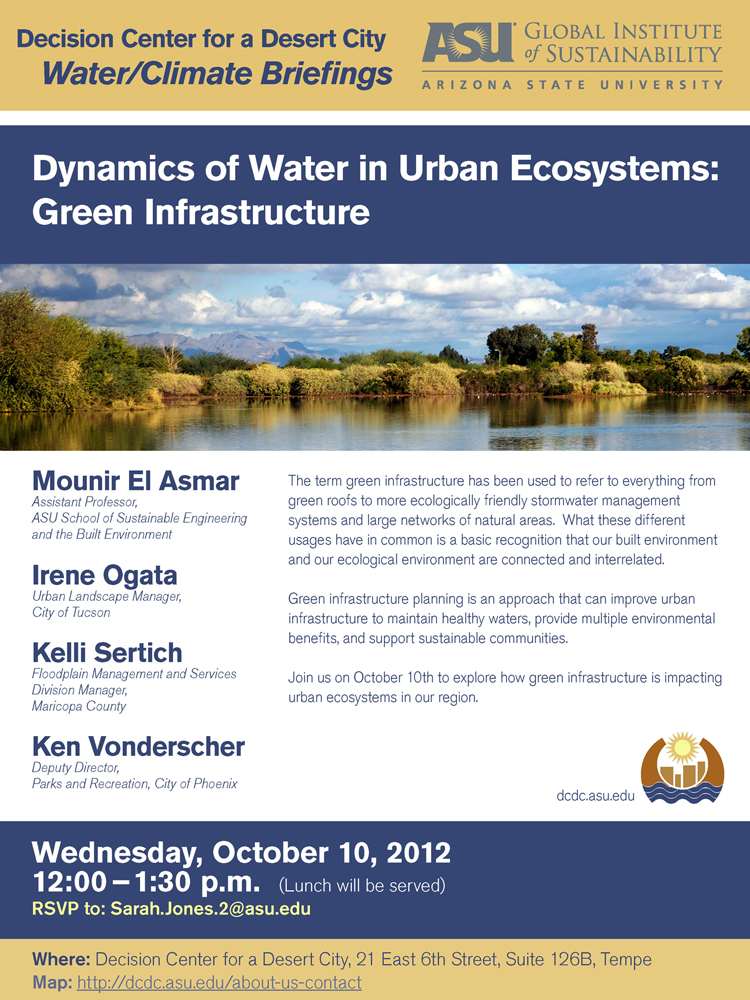DCDC Publication
Tradeoffs Between Water Conservation and Temperature Amelioration in Phoenix and Portland: Implications for Urban Sustainability
Authors
Patricia Gober [1, 2]
Ariane Middel [3]
Anthony Brazel [1]
Soe Myint [1]
Heejun Chang [4]
Jiunn-Der Duh [4]
Lily House-Peters [4]
Abstract
This study addresses a classic sustainability challenge—the tradeoff between water conservation and temperature amelioration in rapidly growing cities, using Phoenix, Arizona and Portland, Oregon as case studies. An urban energy balance model— LUMPS (Local-Scale Urban Meteorological Parameterization Scheme)—is used to represent the tradeoff between outdoor water use and nighttime cooling during hot, dry summer months. Tradeoffs were characterized under three scenarios of land use change and three climate-change assumptions. Decreasing vegetation density reduced outdoor water use but sacrificed nighttime cooling. Increasing vegetated surfaces accelerated nighttime cooling, but increased outdoor water use by ~20%. Replacing impervious surfaces with buildings achieved similar improvements in nighttime cooling with minimal increases in outdoor water use; it was the most water-efficient cooling strategy. The fact that nighttime cooling rates and outdoor water use were more sensitive to land use scenarios than climate-change simulations suggested that cities can adapt to a warmer climate by manipulating land use.
Download publication. You may or may not have access through your institution.
[1] School of Geographical Sciences and Urban Planning, Arizona State University
[2] Johnson-Shoyama Graduate School of Public Policy, University of Saskatchewan, Saskatoon, Canada
[3] Decision Center for a Desert City, Arizona State University
[4] Department of Geography, Portland State University


